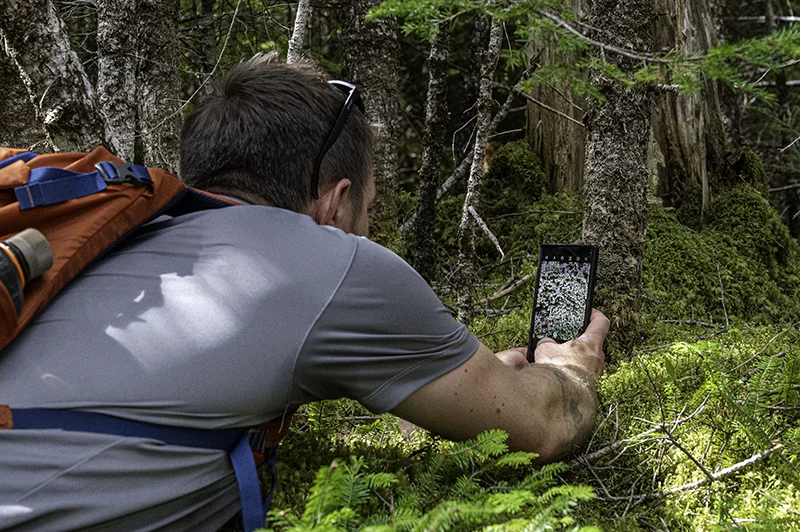Originally published in Lake of the Woods Area News, Volume 55, Number 3, Summer 2025
Just like nature, community science needs everyone, from the wilderness wanderer to the eagle-eyed expert. Your observations help scientists and conservation organizations like the Nature Conservancy of Canada (NCC) learn what nature needs to thrive.
Observing nature can bring new excitement to every adventure. Seeing a new or rare species for the first time unlocks curiosity, looking at the world around you in a different way. A “small orange bird” suddenly becomes a blackburnian warbler, and the trees that were once all the same, upon closer inspection look nothing alike.
A bioblitz—a community-science effort to document as many species as possible within a specific area and time period—is simple to join. All you need is a smartphone, tablet, or digital camera to participate. There’s a great opportunity to add your own discoveries to a Canada-wide event by joining NCC’s annual Big Backyard BioBlitz, taking place July 28 to August 4, 2025. During the first week of August, take photos or record audio to document the nature around you, and submit your observations under the “2025 Big Backyard BioBlitz project” that will be listed in iNaturalist.ca, wherever you are. For detailed instructions and to sign up, visit backyardbioblitz.ca.
We are surrounded by so much diversity in nature; participating in the BioBlitz can open your eyes to the natural world in a way you may not have seen before. BioBlitz data is also helpful for research, especially if people document something new to an area, such as non-native invasive species. Every photo or audio recording people capture is a chance for environmental organizations and scientists to better understand nature in Canada.
You don’t need to be in the wilderness to make a difference. Although the BioBlitz is a great time to visit your favourite spot in nature (or explore somewhere new), there are many species of plants, animals, insects and fungi in urban parks and yards too. Scientists can’t be in every corner of Canada at once, so no matter where you are, you can contribute!
Data collected during past NCC BioBlitzes has been useful to scientists, educators and nature enthusiasts, including those working for NCC and other conservation organizations. Last year, NCC had more than 8,600 participants across Canada documenting more than 48,000 observations. However, almost all of Ontario’s recordings were concentrated within southern Ontario.
This year is our chance to highlight northern Ontario’s wealth of nature.
What may seem like a familiar everyday plant or animal to us in one region may be a dream “lifer” (a species seen for the first time in one’s lifetime) for someone in another. The Lake of the Woods area holds many gems, like American white pelicans which are seldom seen anywhere else in Ontario. Northwestern Ontario’s mixture of habitats, from boreal and hardwood forests to western prairie and extensive lakes, supports a high level of biodiversity and unique and globally rare plants, such as rams-head lady’s slipper.
To join us, get out in nature in your community and discover biodiversity all around you. Explore with your friends, family or solo throughout the first week of August, then show off your photos and recordings by sharing them on social media with the hashtag #NCCBioBlitz.

